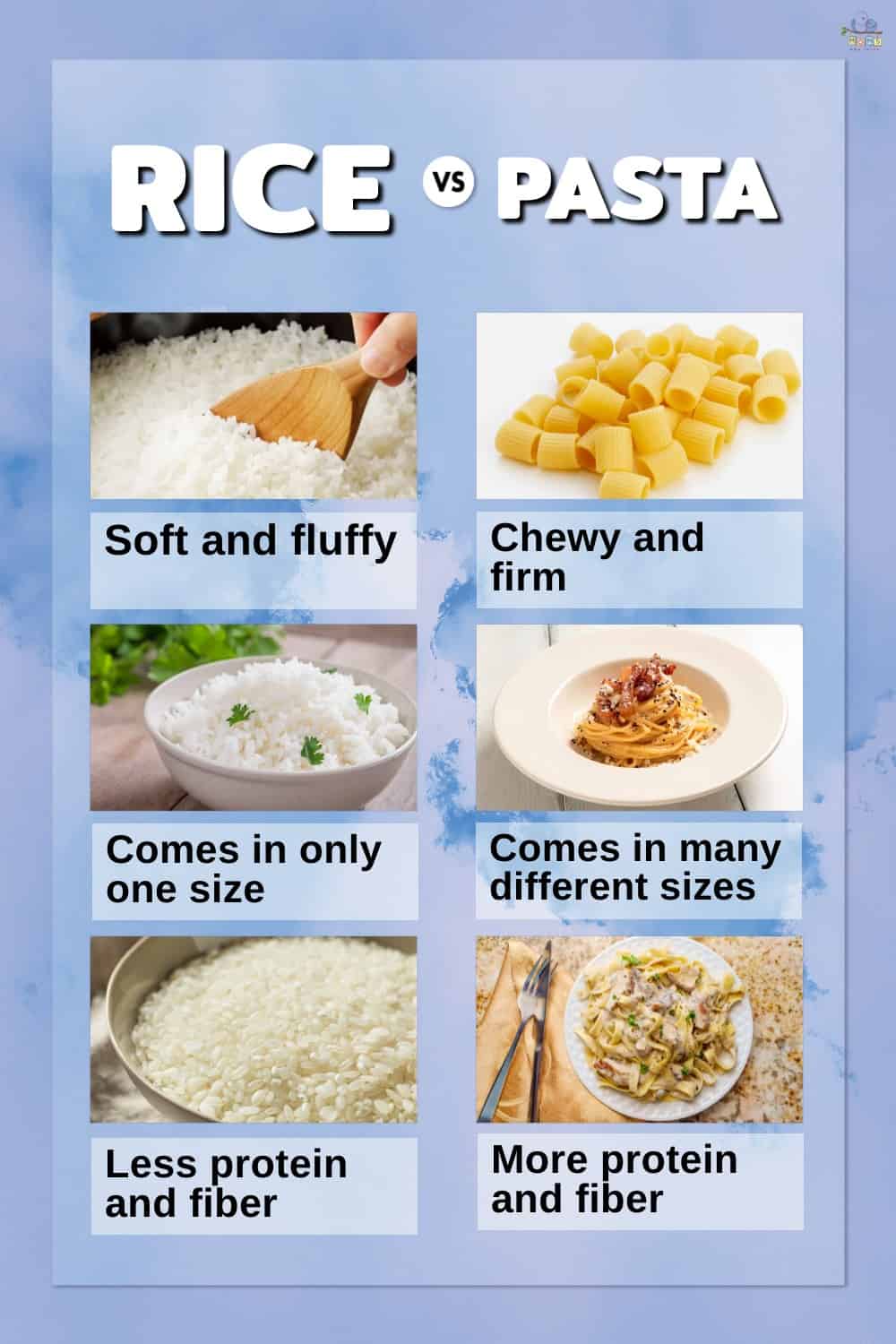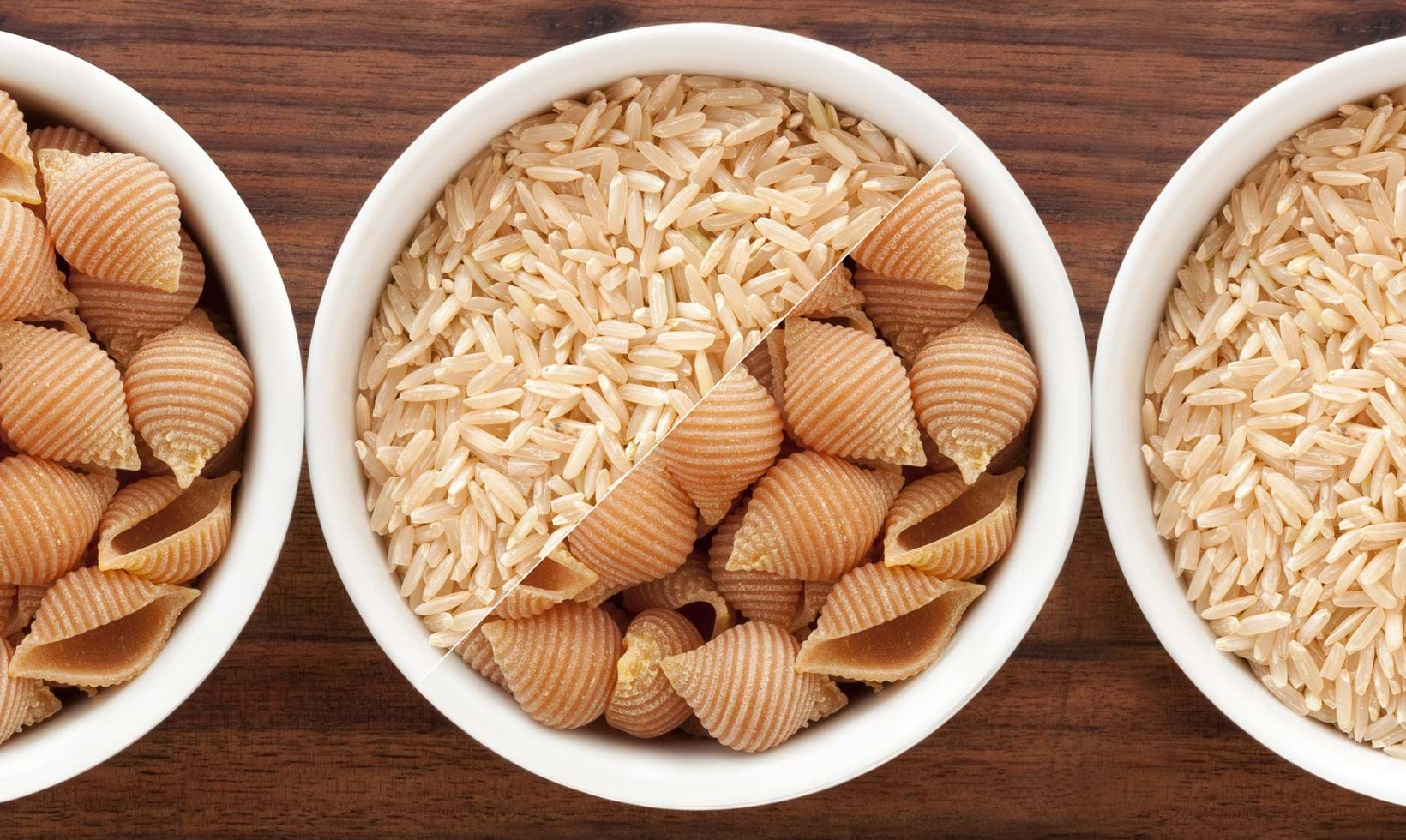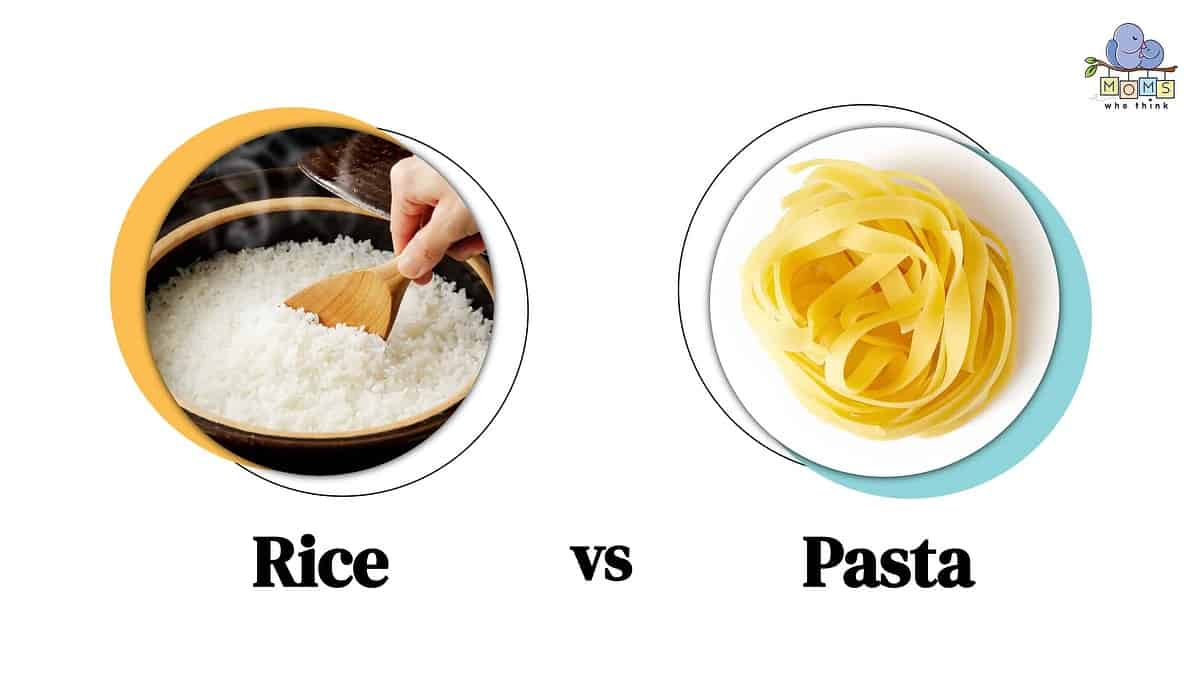
Introduction
When it comes to achieving lean gains, the choice of carbohydrates can play a crucial role in supporting your fitness goals. Rice and pasta are two popular carb choices, but which one is better for lean gains? In this article, we will explore the benefits of rice and pasta for lean gains and discuss the factors to consider when making a choice.
Benefits of rice and pasta for lean gains
Rice and pasta are both excellent sources of carbohydrates, which provide the energy needed for intense workouts and muscle recovery. They are also relatively low in fat and high in complex carbohydrates, which are digested slowly, providing a steady release of energy throughout the day.
Rice, especially brown rice, is often considered a healthier choice for lean gains due to its higher fiber content. Fiber helps regulate digestion, promotes satiety, and may even aid in weight management. Brown rice also contains more vitamins and minerals than white rice, making it a nutrient-dense option.
Pasta, on the other hand, is often preferred by athletes and bodybuilders for its versatility and quick energy release. It is high in carbohydrates, which are essential for replenishing glycogen stores after intense exercise. Pasta is also a good source of B vitamins, which are important for energy metabolism.
Factors to consider when choosing between rice and pasta
The choice between rice and pasta ultimately depends on individual preferences, dietary needs, and fitness goals. Here are some factors to consider:
Nutritional profile: While both rice and pasta provide carbohydrates, they differ in terms of fiber content, vitamins, and minerals. Evaluate your overall diet and ensure that your chosen option aligns with your nutrient requirements.
Digestive tolerance: Some individuals may find one option easier to digest than the other. Consider your digestive health and choose the option that agrees with your system.
Cooking versatility: Rice and pasta can be prepared in various ways to suit different culinary preferences. If you enjoy experimenting with different flavors and dishes, consider the versatility of each option.
Meal timing: Rice is often preferred as a post-workout meal due to its slower digestion and sustained energy release. Pasta, with its quick energy release, may be better suited for pre-workout meals to provide an immediate boost.
Personal preference: Ultimately, the choice between rice and pasta comes down to personal preference. Choose the option that you enjoy and can consistently incorporate into your diet.
In conclusion, both rice and pasta can be beneficial for lean gains, providing the necessary carbohydrates for energy and muscle recovery. Consider your individual needs, preferences, and goals when choosing between the two. Remember that a balanced diet and regular exercise are key to achieving lean gains, regardless of the carbohydrate source you choose.

Rice
Types of rice for lean gains
When it comes to choosing rice for lean gains, there are several varieties to consider. Brown rice, which is a whole grain, is often recommended for its higher fiber content and greater nutrient density compared to white rice. It provides a steady release of energy and helps regulate digestion, making it a popular choice for those looking to build muscle and maintain a lean physique.
Another option is wild rice, which is not actually rice but a type of grass seed. It is rich in protein, fiber, and essential minerals, making it an excellent choice for lean gains. Other varieties such as black rice and red rice are also gaining popularity due to their higher antioxidant content and potential health benefits.
Benefits of rice for muscle building
Rice is an excellent source of complex carbohydrates, providing a slow and sustained release of energy for intense workouts. This makes it an ideal fuel for muscle building and recovery. Additionally, the high carbohydrate content in rice helps replenish glycogen stores in the muscles, aiding in post-workout recovery.
Furthermore, rice is gluten-free and easily digestible, making it suitable for individuals with gluten sensitivities or digestive issues. It is also low in fat and cholesterol, making it a healthy choice for overall cardiovascular health.
Rice is not only a source of carbohydrates but also contains essential nutrients such as B vitamins, magnesium, and zinc, which are important for energy metabolism, muscle function, and immune support. These nutrients contribute to optimal performance and muscle growth.
When incorporating rice into a lean gains diet, portion control is key. It's important to balance the amount of rice consumed with other macronutrients such as protein and healthy fats to maintain a well-rounded and nutritious diet.
In summary, rice is a versatile and nutrient-rich carb choice for individuals aiming to build lean gains. The different varieties of rice offer various health benefits and can be tailored to individual preferences and dietary needs. When combined with a balanced diet and regular exercise, rice can support muscle building, provide sustained energy, and aid in post-workout recovery. [5][6][7][8]

Pasta
Types of pasta for lean gains
When it comes to choosing pasta for lean gains, there are a few options to consider. Whole wheat pasta is a popular choice as it is made from whole grains, providing a higher fiber content and more nutrients compared to refined white pasta. This means it takes longer to digest, resulting in a slower release of energy and a more sustained feeling of fullness.
Another option is legume-based pasta, such as lentil or chickpea pasta. These alternatives are made from legume flours and offer a higher protein content compared to traditional wheat-based pasta. Protein is crucial for muscle building and recovery, making legume-based pasta a great choice for those looking to optimize their lean gains.
Benefits of pasta for muscle building
Pasta, whether whole wheat or legume-based, is a valuable source of carbohydrates. Carbohydrates are essential for fueling intense workouts and supporting muscle growth. The body breaks down carbohydrates into glucose, which is then used as energy during exercise. By replenishing glycogen stores in the muscles, pasta aids in post-workout recovery and ensures optimal performance.
Moreover, pasta is a convenient and versatile food option that can be easily incorporated into a balanced diet. It can be paired with lean protein sources such as chicken or tofu and a variety of vegetables to create a well-rounded meal. This combination of macronutrients provides the necessary building blocks for muscle recovery and growth.
Additionally, pasta provides essential nutrients such as B vitamins, iron, and magnesium, which play important roles in energy metabolism and muscle function. These nutrients are crucial for achieving lean gains and ensuring overall fitness.
It's important to note that portion control is key when including pasta in a lean gains diet. While pasta can be a valuable source of carbohydrates, excessive consumption can lead to an excess calorie intake, which may hinder weight loss or maintenance goals.
In summary, both rice and pasta can be suitable choices for individuals aiming to achieve lean gains. Whole grain options like brown rice and whole wheat pasta offer greater nutrient density and fiber content. Legume-based pasta provides a higher protein content. The key is to incorporate these carbohydrate sources in moderation, alongside lean protein and plenty of vegetables, to create a well-balanced diet that supports muscle building and overall fitness. Ultimately, the best choice between rice and pasta depends on personal preferences, dietary needs, and individual goals. [9][10][11][12]

Nutritional Comparison
When deciding between rice and pasta for lean gains, it's essential to consider the nutritional composition of each. Both rice and pasta are sources of carbohydrates, which are crucial for providing energy during exercise and supporting muscle growth. However, some differences in their macronutrient and micronutrient profiles may influence your choice.
Macronutrient breakdown of rice and pasta
Rice and pasta have similar amounts of calories per serving, with approximately 200 calories per cooked cup. However, the specific macronutrient breakdown varies between the two. Rice is higher in carbohydrates, with around 45-53 grams per cup, making it a reliable source of energy. Pasta, on the other hand, contains slightly fewer carbohydrates, averaging around 40-45 grams per cup.
Both rice and pasta offer small amounts of protein, with rice containing about 4-5 grams per cup, and pasta providing around 7-8 grams. While protein is essential for muscle building and recovery, these amounts may not be sufficient to meet the increased protein needs of individuals looking to optimize lean gains. Therefore, it is crucial to include additional high-quality protein sources in your diet, such as lean meats, poultry, fish, tofu, or legumes.
When comparing the fat content, rice and pasta are both low in fat. Rice contains less than 1 gram of fat per serving, while pasta has around 1-3 grams. These modest amounts of fat make rice and pasta suitable options for those aiming to achieve lean gains, as excessive fat intake can hinder weight loss or maintenance goals.
Micronutrient differences between rice and pasta
While both rice and pasta offer essential nutrients, there are slight differences in their micronutrient profiles. Brown rice, in particular, is often touted as a healthier option due to its higher nutrient content. It retains the bran, which is an excellent source of fiber, B vitamins, and minerals such as magnesium and phosphorus. These nutrients play important roles in energy metabolism and muscle function, making brown rice a valuable addition to a lean gains diet.
On the other hand, certain types of pasta, such as whole wheat pasta, can also be nutrient-dense. Whole wheat pasta retains the bran and germ, providing a higher fiber content and additional nutrients, including B vitamins, iron, and zinc. These micronutrients are essential for overall health and fitness and can support muscle recovery and growth.
In summary, both rice and pasta can be suitable choices for individuals aiming to achieve lean gains. The decision between the two should consider personal preferences, dietary needs, and individual goals. Brown rice offers greater nutrient density and fiber content, while whole wheat pasta provides additional nutrients. By incorporating these carbohydrate sources in moderation, alongside lean protein and plenty of vegetables, individuals can create a well-balanced diet that supports muscle building and overall fitness. [13][14][15][16]

Glycemic Index and Fiber
Impact of glycemic index on lean gains
The glycemic index (GI) is a measurement that ranks carbohydrates based on their effect on blood sugar levels. Foods with a high GI, such as white rice and white pasta, cause a rapid spike in blood sugar levels, followed by a sharp drop, which can result in cravings and a potential energy crash. These fluctuations can hinder lean gains and weight management.
On the other hand, foods with a low GI, such as brown rice and whole wheat pasta, are digested more slowly, leading to a more gradual rise in blood sugar levels. This steady release of glucose provides sustained energy, helping to support lean gains without the unwanted energy dips.
While the effect of GI on lean gains is not as significant as overall calorie and macronutrient intake, opting for lower GI carbohydrates like brown rice and whole wheat pasta can have additional benefits for overall health and weight management.
Fiber content and its role in muscle building
Fiber is a crucial component of a healthy diet, and it plays a vital role in muscle building. It aids in digestion, promotes satiety, and helps regulate blood sugar levels. Whole wheat pasta has much more fiber than brown rice (3.9 grams compared to 1.6 grams). That makes it far better at filling you up, which can be beneficial for individuals looking to optimize lean gains and manage hunger levels.
The higher fiber content in whole wheat pasta also results in slower digestion, allowing for a more controlled release of glucose into the bloodstream. This can help provide a steady source of energy during workouts and prevent blood sugar spikes and crashes that can hinder progress.
Furthermore, fiber supports overall gut health, aiding in nutrient absorption and eliminating waste from the body. This is essential for individuals striving for optimal performance and muscle growth.
In conclusion, when it comes to choosing between rice and pasta for lean gains, it's crucial to consider the glycemic index and fiber content. Brown rice and whole wheat pasta offer lower GI options and higher fiber content, making them more favorable choices for individuals looking to optimize their muscle-building efforts. However, it's essential to remember that both rice and pasta can have a place in a well-rounded diet, and individual preferences, dietary needs, and overall goals should also be taken into account. By incorporating these carbohydrate sources mindfully, alongside lean protein and a variety of vegetables, individuals can create a balanced and nourishing diet that supports lean gains and overall fitness. [17][18][19][20]

Rice-based pre and post-workout meal options
Rice and pasta are two popular carbohydrate choices when it comes to fueling pre and post-workout meals for lean gains. While both options can provide the necessary energy for workouts and muscle recovery, there are some important factors to consider when deciding which is best for your specific goals.
Rice is a staple in many cuisines and offers a variety of options for pre and post-workout meals. Here are some rice-based meal ideas that can support lean gains:
Brown Rice with Grilled Chicken and Vegetables: Brown rice is a whole grain that has a lower glycemic index and higher fiber content compared to white rice. This slower digestion can provide a sustained release of energy, making it an excellent choice for maintaining stable blood sugar levels during and after workouts. Pairing it with lean protein from grilled chicken and nutrient-rich vegetables can create a well-rounded meal that supports muscle growth and recovery.
Rice and Beans: This classic combination provides a complete protein source when combined, making it an ideal option for vegans or vegetarians. Beans are also high in fiber, which can promote satiety and aid in digestion. Choosing brown rice over white rice can further enhance the nutritional value of this meal.
Sushi Rolls with Brown Rice: Sushi made with brown rice can be a delicious and nutritious option for pre or post-workout meals. The combination of rice, fish (such as salmon or tuna), and seaweed provides a good balance of carbohydrates, protein, and healthy fats. Additionally, the fiber content in brown rice can help keep you feeling satisfied and prevent overeating.
When incorporating rice into your pre and post-workout meals, it's important to be mindful of portion sizes. Aim for a balanced plate that includes a serving of rice, a source of lean protein, and plenty of vegetables for added vitamins and minerals.
Overall, rice can be a suitable choice for lean gains because of its lower glycemic index and higher fiber content compared to white rice. However, it's important to choose whole-grain options like brown rice for maximum nutritional benefits.
In the next section, we'll explore pasta-based pre and post-workout meal options to further compare their suitability for lean gains. [21][22]
